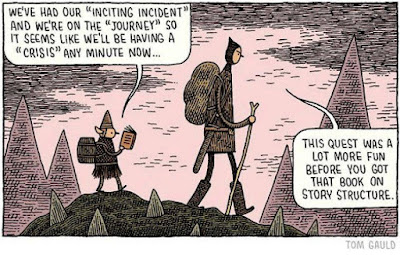Who’s with me?
With only five days to start, I had better solidify
my ideas. I have a concrete plotting schematic I follow when outlining my
novels, but sometimes events and specific scenes don’t come to me until I’m
almost finished the first draft. And even then, sometimes epiphanies will come,
and I’ll rush to include this new breakthrough into my story.
When I was writing
Master of Time, I wrote out all
eighty-something scenes on sticky notes and laid them out on my dining-room
table. I preceded to label the scenes according to the plot points on my
outline. It wasn’t as easy as I thought, and it wasn’t until later that I
learned what I was doing wrong.
I was confusing
my characters’ inner and outer motivations and trying to fit them onto one linear
line.
The two are
completely different.
The characters’
outer journey manifests in the physical things that the reader sees happen. The
actual events that open the doors between acts. In Master of Time, my first plot point occurs when Meuric and Catrin
set out on their journey. Fifty percent of the way throug
This is not the
inner motivations that drive the characters or the characters’ emotional trek.
The outer journey has a continual uphill climb until WHACK, the characters reach
the apex of the story and it all goes downhill from there.
Not true with
the emotional journey. Both Meuric and Catrin went through so many ups and
downs that their paths looked more like a seismograph wave.
Just remember—three
catastrophes and an ending. That’s plot point one at 25%, plot point two at 50%,
and plot point three at 75%. The ending is the climax, somewhere around 90-98%.
All the other way points pertain to the characters’ emotional journey or are
there to propel events forward, like with the Hook and the Inciting Incident. The
All-is-Lost Moment is another pivotal scene. They are events, but not the KEY
events.
Think of the plot
points as answering what and when while the inner motivations answer
the how and why.
Once the
distinction is made between inner and outer motivations, laying out your
outline and mapping your plot points is a piece of cake.


No comments:
Post a Comment